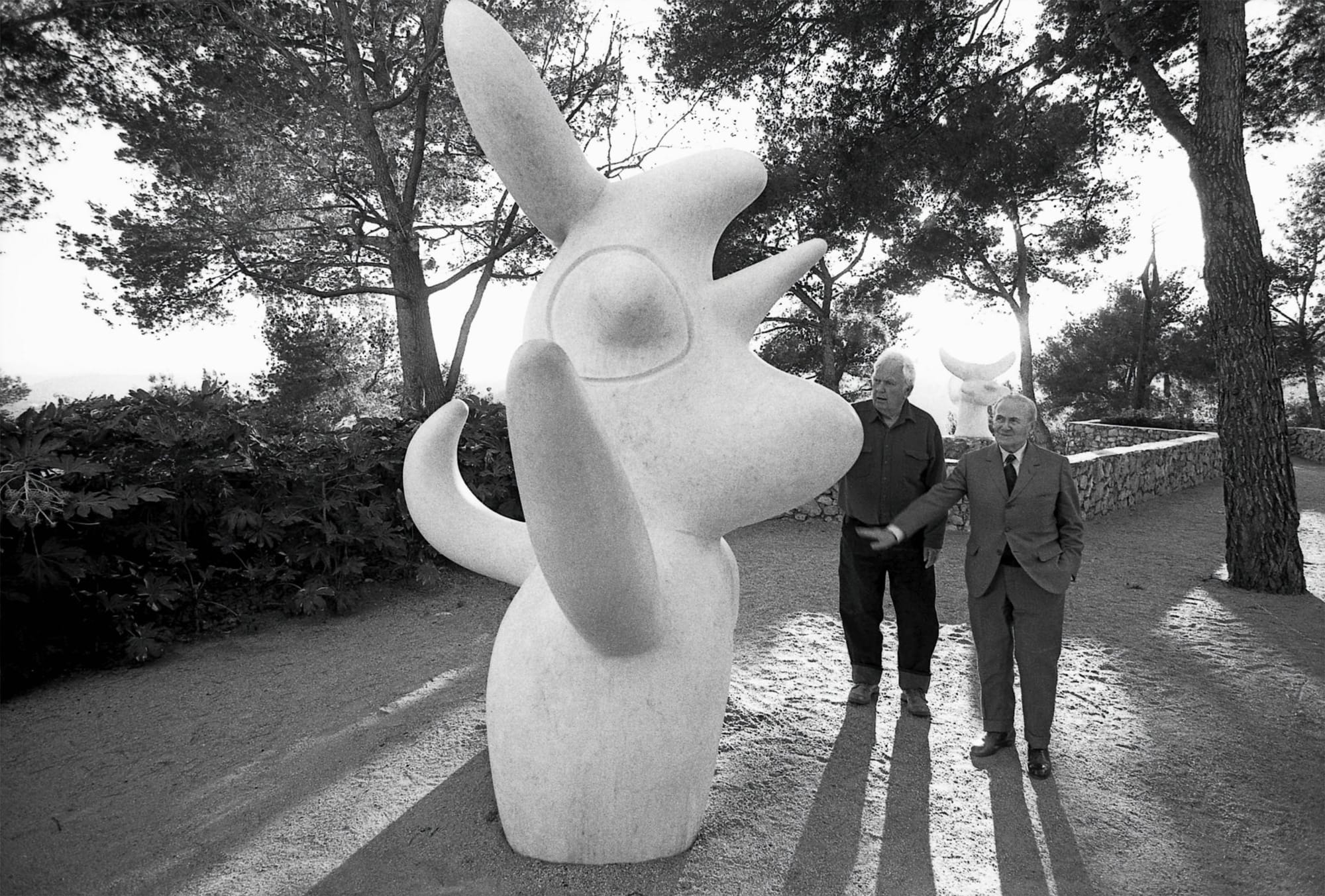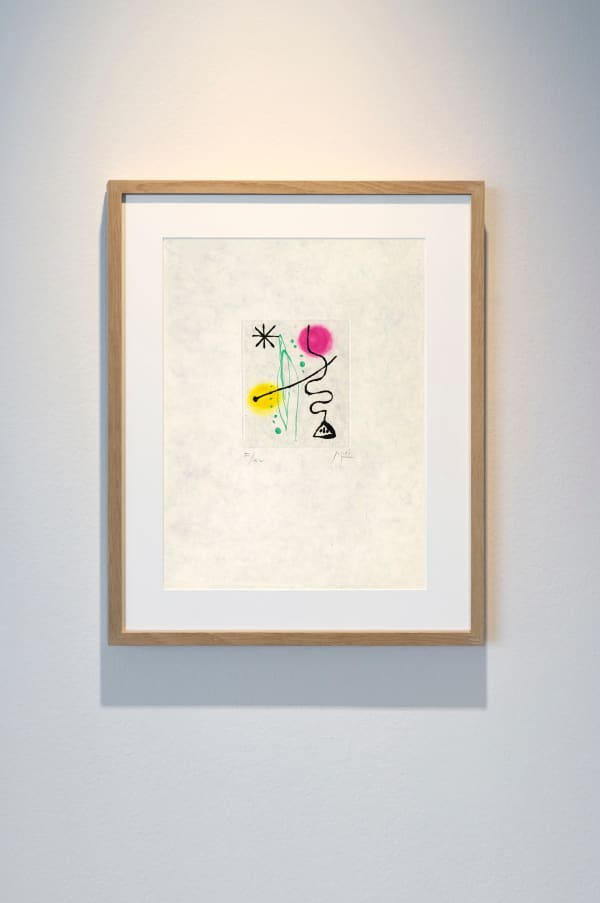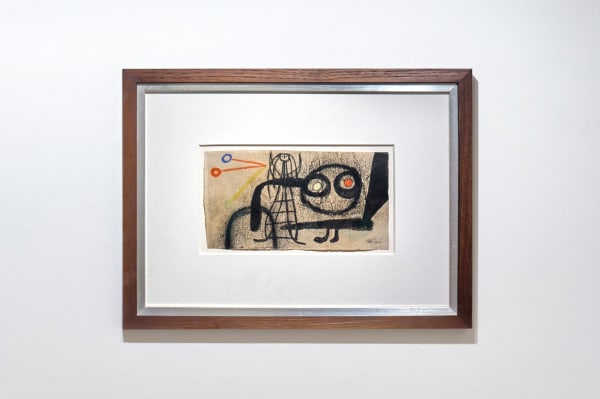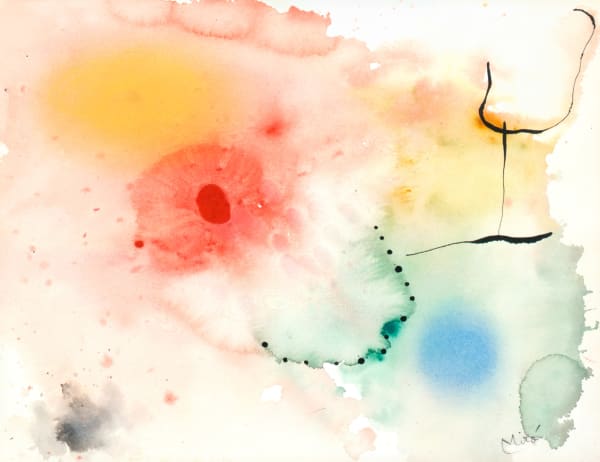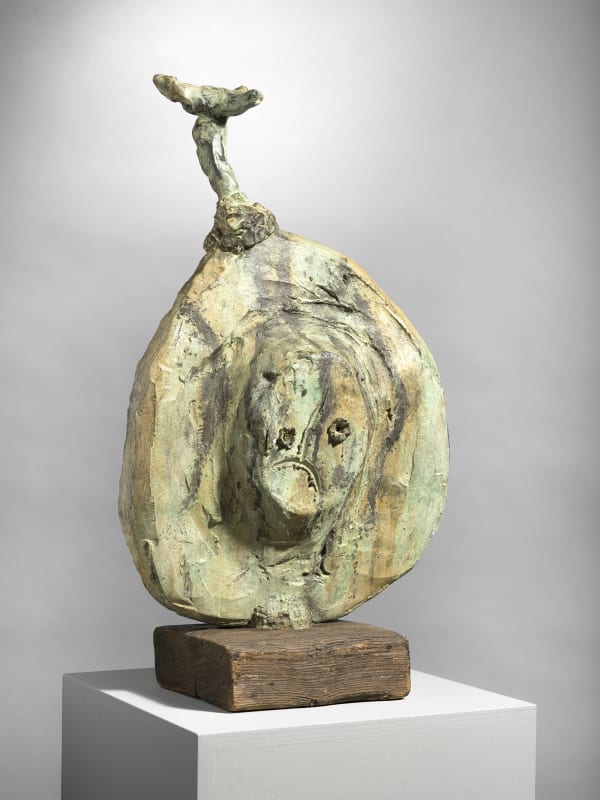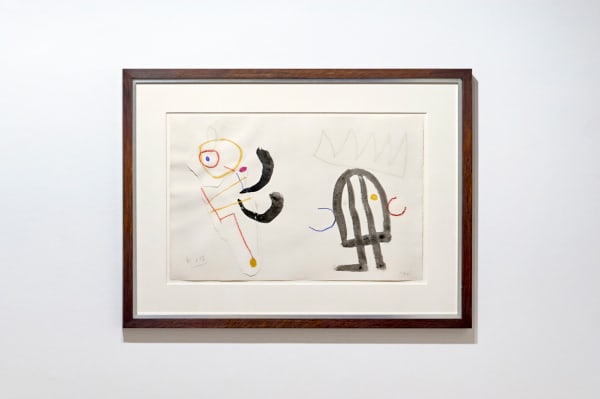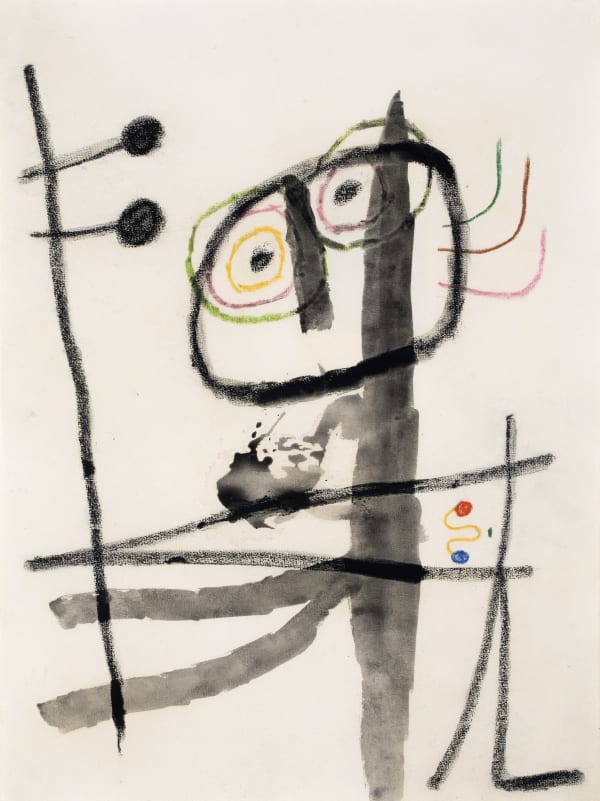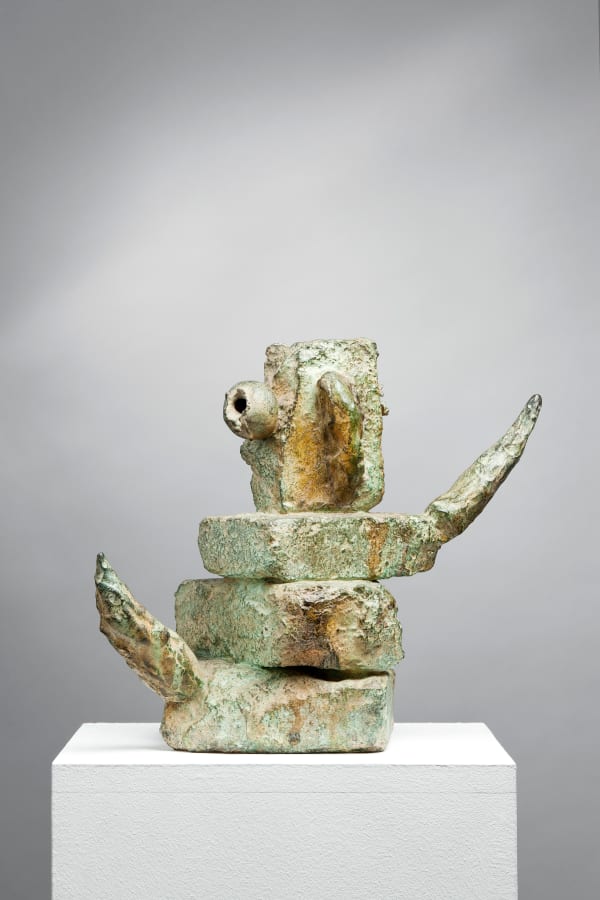Calder & Miró
Past Exhibitions exhibition
Overview
Alexander Calder and Joan Miró met in the creative milieu of 1920s Paris, amidst the artistic giants of Braque, Dalí, and Picasso. Despite the rise of fascism forcing them back to their home countries, Calder and Miró maintained contact, influencing and exhibiting together until Calder's death in 1976. Their shared fascination with the cosmos and illusory worlds propelled abstraction to new heights. This exhibition highlights their thematic commonalities, featuring weightless organic forms, a penchant for pure colors, and sinuous lines. These elements are especially evident in their works on paper, where both artists explore the stream of consciousness through dream-like compositions and celestial symbolism. Miró's imaginative approach resonates with Calder's ability to capture movement and transform space through his mobiles, stabiles, paintings, and drawings.
Images Copyright:
© 2023 Calder Foundation, New York / SABAM Belgium
Successió Miró © 2023 ADAGP
Homepage Photograph by Ugo Mulas © Ugo Mulas Heirs
Installation Views
Works
Join our mailing list
* denotes required fields
In order to respond to your enquiry, we will process the personal data you have supplied to communicate with you in accordance with our Privacy Policy. You can unsubscribe or change your preferences at any time by clicking the link in our emails. This site is protected by reCAPTCHA and the Google: Privacy Policy and Terms of Service apply.
